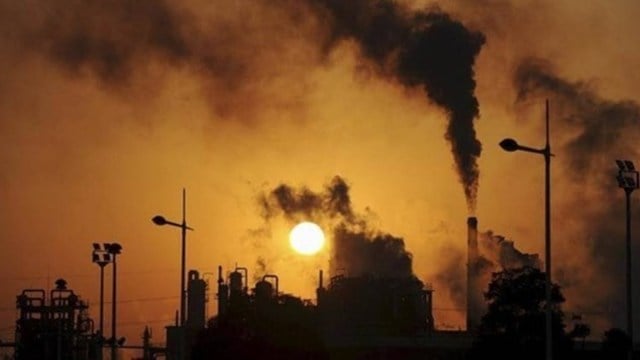ARTICLE AD BOX
 Although it covers only four sectors, and about half of India’s annual CO2 emissions, the CSEP assessment is significantly lower than previous estimates of India’s requirement of climate finance till 2030.
Although it covers only four sectors, and about half of India’s annual CO2 emissions, the CSEP assessment is significantly lower than previous estimates of India’s requirement of climate finance till 2030.
AN ADDITIONAL investment of about $467 billion between now and 2030 would be needed to enable a significant decarbonisation of four of India’s most emissions-intensive sectors, a new study has found.
The study, by Janak Raj and Rakesh Mohan of the Centre for Social and Economic Progress (CSEP), is the first-of-its-kind bottoms-up sector-specific assessment of requirements of climate finance in India. The authors studied the needs of power, steel, cement and road transport sectors, which together account for over half of India’s CO2 emissions.
Not surprisingly, the steel and cement industry, two sectors that are amongst the most difficult to decarbonise, would need the maximum amounts of investments to get rid of their carbon footprint through installation of technologies like carbon capture and storage. The study assessed the steel sector’s requirement till 2030 as $251 billion and that of cement to be $141 billion. This scale of capital expenditure, over and above what the industries are already putting in, would ensure the mitigation of not just existing emissions from these two sectors, but also the incremental emissions that are likely to arise as a result of the expected growth of these industries by 2030, the study said.
The power sector, which is already undergoing a rapid transformation due to deployment of renewables, would need about $47 billion additional investment until 2030, while road transport would require $18 billion, the study said.
Although it covers only four sectors, and about half of India’s annual CO2 emissions, the CSEP assessment is significantly lower than previous estimates of India’s requirement of climate finance till 2030. Some of these estimates, done a few years earlier, have projected India’s needs to be well over a trillion dollars till 2030.
The authors said the cumulative $467 billion would help India not just easily achieve its international commitments for 2030 under the Paris Agreement, but advance much further on the road to low-carbon development. The decarbonisation of just the power, cement and steel sectors would lead to mitigation of about 6.9 billion tonnes of CO2 emissions between now and 2030, they said. They did not account for carbon reductions in the road transport sector due to lack of adequate data.
India has already achieved one of its 2030 climate targets — ensuring that at least 50 per cent of its electricity installed capacity was based on non-fossil fuel sources — earlier this year. Another of its targets, relating to creation of 2.5 to 3 billion tonnes of additional carbon sinks in forests and trees, has also most likely been achieved, but still to be confirmed by fresh set of data. The third target — reduction of emissions intensity by at least 45 per cent from 2005 levels — is expected to be attained well before 2030.
Story continues below this ad
India has maintained that it can do much more on decarbonisation if it was assisted by international finance from developed countries as was provided for in the Paris Agreement. This money has been difficult to come by.
The authors said their assessment of climate finance requirements was of an order which could be raised internally with the help of the private sector. They said they had also done a macroeconomic consistency check on their climate finance estimates, and found that this much money could be easily absorbed in the system without having adverse impacts on critical indicators like export competitiveness or inflation.



.png)
.png)
.png)

























 English (US) ·
English (US) ·